Economists have written about the law of unintended consequences. This is the theory that the actions of people, governments, and industries always have effects that are unanticipated. Whether it’s the too-quiet Airbus A380 or cell phones and bananas, unexpected outcomes often happen in pursuit of other goals. One of the latest examples of this is the emerging impact of ad blocking technology on the digital media industry. It’s likely your readers are using ad blockers for some combination of these three reasons:
- Ads slow your page speeds to a crawl
- Ads are intrusive/distracting from the content
- Fear of tracking/loss of personal privacy information
And the use of ad blockers is prevalent. Sites like Bloomberg.com for example, find 20% of their traffic now uses some form of ad blocking and therefore they lose 20% of their ad revenue!
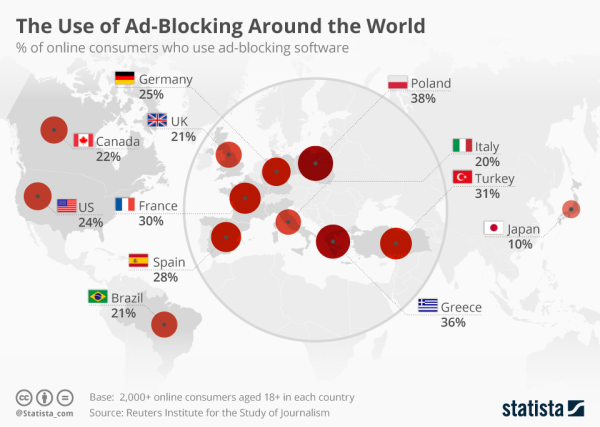
Yes, it’s a problem when an $85 billion industry stands to lose out on 20-25% of their revenue, but how could that happen?
Number one on this list (ads slowing your page speed) is an unintended consequence of too many ads, plugins, and other 3rd party services. It’s no secret that the Web has gained weight. Media companies have stuffed their sites with new ad tech like the guy at the burrito bar that asks for every condiment. Let’s look at these effects in more detail to see what we can learn about these bad habits and just maybe, prevent more visitors from installing ad blockers.
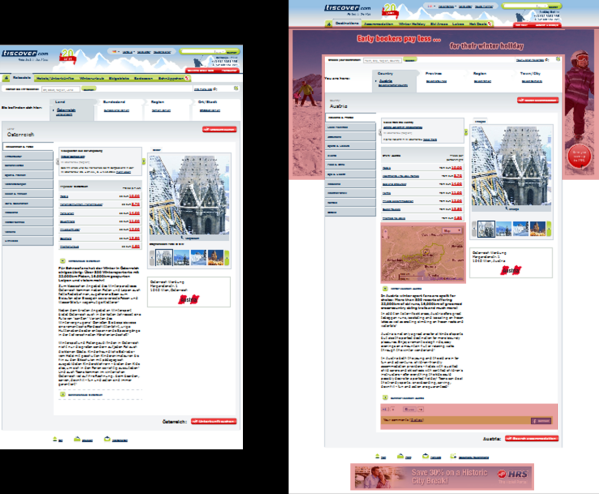
How would your site perform without ads?
In the case of Bloomberg for the home page loads in ~16 seconds on average example (timings per 2nd August tracked in the Dynatrace US Media News Performance Benchmark) with more than 60 hosts providing content—including ads.
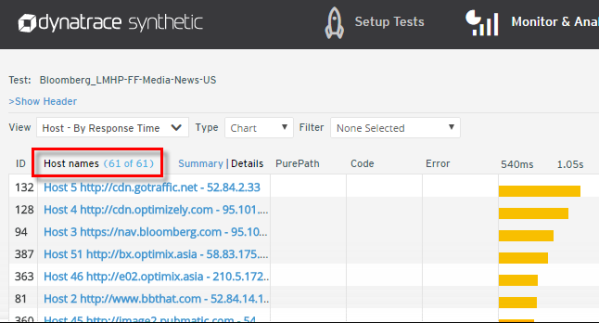
Turning on the ad-blocker (uBlock) it shows that 80 requests or 29% of all requests are blocked which leads to a website that loads 9 seconds faster with far fewer third-party hosts needed.
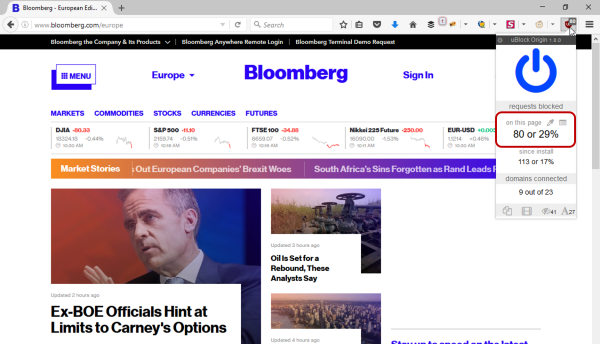
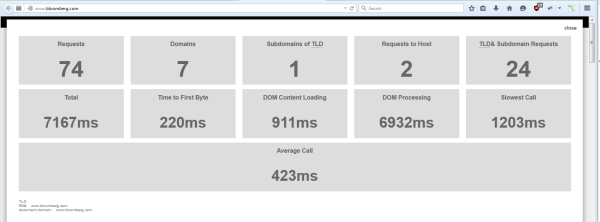
By introducing so many third-party services, you’ve actively encouraging your visitors to use ad blocking tech. Solving the overall ad blocking challenge won’t be easy for media companies, but addressing the performance effects of your bloated experiences will start to make an immediate impact. But where/how to start? Let’s break this down in three steps:
Step 1: Understand performance with, and without, ad blocking
Ad blocking technology varies and is difficult to track. Whether using native functionality in Opera or Safari Mobile, or browser plug-ins like uBlock and Adblock Plus, it’s important to understand the delta in performance between your site in its natural state and when ads are blocked. This can be done in development, but should also be understood in production where all the permutations of ad delivery can be analyzed.
Dynatrace User Experience Management analyzes all the 3rd party resources your site integrates into pages and actions for every visitor. By splitting out those visitors that successfully downloaded ad assets from those that did not, you can quickly understand the performance experienced by both ad-blocked and unfiltered visitors.

Step 2: Understand the influence on user behavior
While ad yields are closely monitored, these metrics are often not understood in the context of technical delivery. Tracking key metrics like impressions, abandonment, and engagement is great, but without understanding technical user profiles like the use of ad blocking tech, it can be misleading. Ad blocking drives anti-pattern trends like higher page views + lower ad yield, and faster page speed + heavier page weight. Make sure your business decisions are informed by this technical context.
Step 3: Baseline all-in experience and focus on visitor frustration
The diversity of user technology profiles in your real user data can make it difficult to spot the impact of application change on end-user experience, especially small degradations in performance. One of the advantages of synthetic web monitoring is that it provides a controlled (laboratory-like) representation of digital experience. By using real browsers and the same wireless carriers or ISP connections that your customers use, synthetic tests highlight deviations in your digital asset’s performance that are hard to find within the data you might be gathering from your site visitors. This approach simplifies protecting the quality of digital experience continuously.
But what about the “edge cases” where a visitor may be using an ad-blocker browser plug-in that doesn’t agree with your site? You may still want to know what action to take in order to make their next visit a success (albeit non-monetized). Dynatrace’s User Experience Index highlights when readers fall into digital potholes so you can pinpoint the technical context (or your app’s behavior) causing their frustration.
Summary
Ad blocking is here today and here to stay. You may already be addressing the challenge it poses to your business by modifying digital experience for these users in some way. But even if you are, you risk making the wrong decisions about maximizing your revenue potential unless you fully understand and proactively manage the performance dimension driving much of ad blocking’s adoption. Ads aren’t the enemy; slowness, intrusiveness, irrelevance and broken processes are.
What is your strategy for dealing with ad blocking?





Looking for answers?
Start a new discussion or ask for help in our Q&A forum.
Go to forum